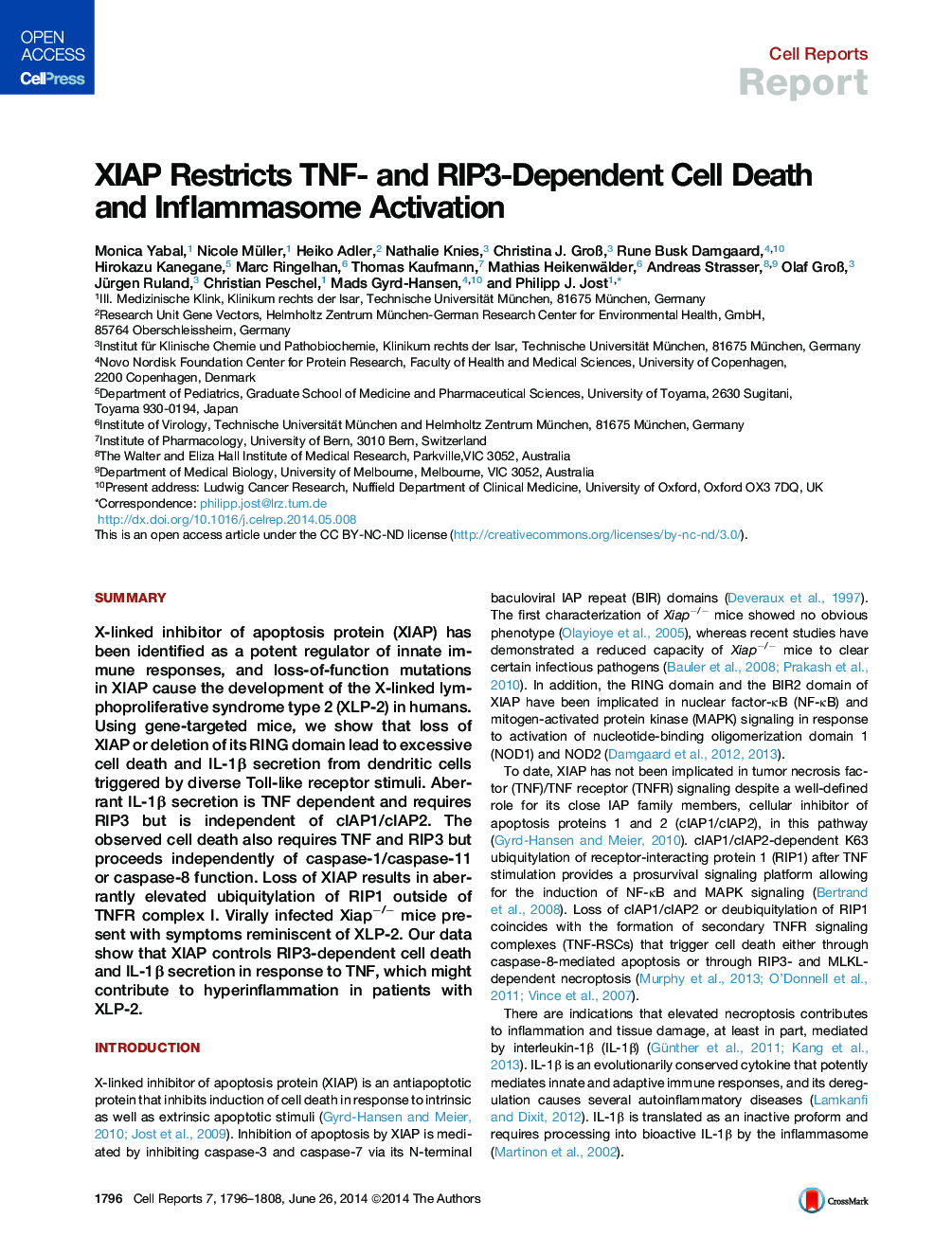| کد مقاله | کد نشریه | سال انتشار | مقاله انگلیسی | نسخه تمام متن |
|---|---|---|---|---|
| 2041322 | 1073156 | 2014 | 13 صفحه PDF | دانلود رایگان |

• XIAP protects against TLR- and TNF-driven inflammasome formation and cell death
• XIAP contributes to the regulation of RIP1 ubiquitylation in response to TNF
• Exaggerated IL-1β secretion and cell death in Xiap−/− dendritic cells are RIP3 dependent
• Upon infection, Xiap−/− mice show signs of hyperinflammation similar to XLP-2 patients
SummaryX-linked inhibitor of apoptosis protein (XIAP) has been identified as a potent regulator of innate immune responses, and loss-of-function mutations in XIAP cause the development of the X-linked lymphoproliferative syndrome type 2 (XLP-2) in humans. Using gene-targeted mice, we show that loss of XIAP or deletion of its RING domain lead to excessive cell death and IL-1β secretion from dendritic cells triggered by diverse Toll-like receptor stimuli. Aberrant IL-1β secretion is TNF dependent and requires RIP3 but is independent of cIAP1/cIAP2. The observed cell death also requires TNF and RIP3 but proceeds independently of caspase-1/caspase-11 or caspase-8 function. Loss of XIAP results in aberrantly elevated ubiquitylation of RIP1 outside of TNFR complex I. Virally infected Xiap−/− mice present with symptoms reminiscent of XLP-2. Our data show that XIAP controls RIP3-dependent cell death and IL-1β secretion in response to TNF, which might contribute to hyperinflammation in patients with XLP-2.
Graphical AbstractFigure optionsDownload as PowerPoint slide
Journal: - Volume 7, Issue 6, 26 June 2014, Pages 1796–1808